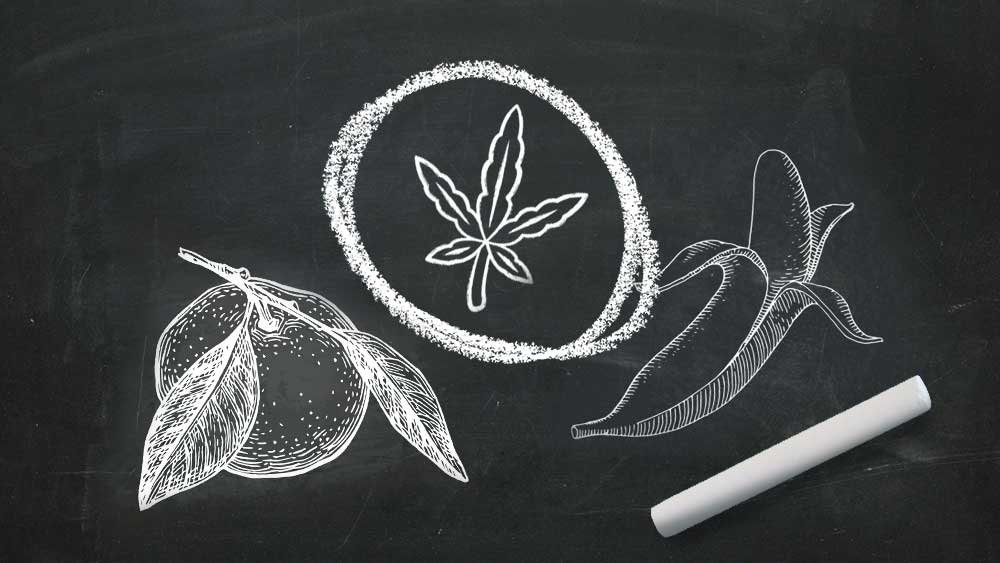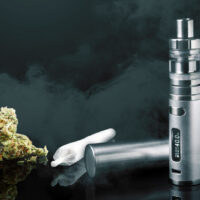If you’re not new to cannabis, you probably stumbled across dry buds at one point or another. Restoring their moisture is a fairly simple process — assuming you know some very important tricks.
Dry weed is crispy and fragile. If it’s bone-dry, it will turn to powder at the touch of your hand.
And if you ever tricked yourself into smoking dry herb, you know that its brittleness is the least of your worries.
It’s harsh on the lungs, burns fast, and doesn’t cause a decent high. This is because it burns at a much higher temperature, and more THC is lost in the process.
It can happen even to top-shelf weed.
Luckily, there are a couple of tried-and-true methods you can use to salvage it.
Prevention: don’t get it dry in the first place
Inadequate storage is by far the most common cause of dry weed. It usually becomes dehydrated after excessive exposure to light and air.
That’s why it is so important to store your cannabis properly — in a dark place, at room temperature, sealed in an airtight glass jar. These conditions will also ensure that your weed is in the environment with an ideal relative humidity of 62%.
That being said, it’s important to note that excessive moisture can lead to mold, which is one thing you can’t fix. The weed that has fungus on it is good for trash can only, as it can be harmful to your respiratory system.
So you see, the ultimate trick is to prevent the damage. It all boils down to avoiding too much light, moisture, and air, while at the same time providing a moderate temperature.
Naturally, cannabis can be stored improperly even in a dispensary, or it might be over-dried right after the harvest.
And even though it’s not your fault, you are left with some crispy chunks.
Here’s what you can do.
The basics of the rehydration process
There is a handful of advice on how to rehydrate cannabis that’s gone dry.
Essentially, it all comes down to a simple procedure: you need to create an encapsulated environment that will allow moisture exchange between dry herb and “an agent”.
In plain words, dehydrated cannabis needs to suck in moisture from something.
To do so evenly, it needs increased relative humidity. Simple soaking won’t do the trick, and you’ll end up with wet weed.
When you seal anything wet in a jar, you’re creating a microclimate that will gradually moisten the environment and its elements (it’s the same principle that humidors are constructed upon).
Basically, anything that contains a lot of water will lead to this effect.
Be cautious, though. Do not soak “the moisturizing agent” or leave it in contact with your weed. This is a roadway to mold.
Also, be sure to check on your weed. Never leave it hanging sealed for days. I’m sure you’ve guessed the reason: yes, mold.
If you’re dealing with larger quantities, give it a shake every once in a while, as this will even the humidity level across the container.
Last, but not least, when the rehydration process is finished, test your cannabis by bending its stem.
If it doesn’t snap, you might have overdone it and should give it some time to dry out.
I suggest consuming cannabis right after the procedure, as this will ensure that you don’t rehydrate multiple times. It’s a tested recipe for fungal explosion.
Rehydrate cannabis using homespun remedies
As I said, anything that contains a lot of water can rehydrate your weed perfectly. These are usually the things you can find at your fingertips: fruit and vegetables, paper towels, ear swabs, or if you’re lucky – some fresh buds.
Here are some popular recipes:
Citrus peel
This is probably the oldest trick in the book. Simply take a few pieces of orange or lemon peel, and place them in a container (jar, Mason jar, ziplock bag) with your dry weed.
Be sure to have a container that’s large enough, as you need to separate the peel and the weed and make certain they are not touching each other.
Also, ensure that there are no fruit leftovers on the peel you’re using. This can spoil the process by leading to a moldy outcome.
There is no precise timeline for this recipe. It could take anywhere from a couple of hours to 24 hours, depending on how severe the dryness is. Always check up on your weed while you’re rehydrating it. When it’s light and fluffy, it’s ready for smoking.
Do know that orange and lemon will give your weed a citrusy flavor and that the end result will have specific odor and taste.
That said, this method can be used with all the strains, but is a perfect match with those that already have a citrusy aroma (Bruce Banner, Chernobyl, Maui Wowie, or Blueberry Widow, if you prefer indicas).
Watermelon
Basically, the outline for the watermelon method is exactly the same as the one with citruses.
The only difference is, of course, the flavor. If you enjoy it, or simply feel like making a watermelon bong, I’ll recommend rehydrating your weed this way.
Banana
If you opt for the banana method, there’s one thing you should know: its peel contains more moisture, so you have to check on your weed at shorter intervals (give it an hour first, and then open your container every 15 minutes).
Lettuce
Lettuce is 90% water, so it’s no wonder that it’s a great option for regaining moisture of your weed. Although Iceberg is the best bet of all sorts, any lettuce that you have at your hands will do.
The procedure is completely the same: take a slice of lettuce and put it in a container with your buds. Give it some time, and check on them regularly.
Bread
Although a slice of bread that has spent a few hours in a container with dry weed will come out bone-dry, I think the yeast in it can be problematic.
Because there is a risk of developing mold on your cannabis, I’d avoid bread. There are smarter options out there.
Paper towel/toilet paper and distilled water
Using distilled water and paper towels is the cleanest method on the list. And probably the simplest one there is.
To do this right, be sure to not use tap water. In most cases, it will make your weed taste awful.
The best option is moistening (not soaking) a paper towel using distilled water, as it was chemically cleansed of all the impurities.
There are a number of ways you can place a piece of wet paper in a container: roll it up in tin foil and poke holes so the moisture can get out, tape it to the lid, or simply place it next to the buds without touching.
If you don’t like experimenting with flavor, this is by far the best method you can use to revive your buds.
Fresh cannabis
If you’re all out of bananas and toilet paper, just pick a cannabis flower.
Jokes aside, a freshly harvested plant can be a really efficient “moisturizing agent”. It will transfer all its moist, flavor, and scent to its dry neighbor.
Express rehydration
When you need a really quick fix, use boiling water. This is an extreme solution, and should be used with caution – there is a high risk of over-moistening your weed.
Put a pot filled with water on the stove and wait for it to boil. Next, place it somewhere safe and put a piece of damp cloth over it. Your dry weed should go on top of it all, where it can be moistened by vapor.
That’s it. 30 minutes will suffice, but I suggest inspecting the results after 10-15 minutes.
Humidity controllers
If you’re not really a DIY person and prefer buying specialized products that take all the guessing out of it – you’re in luck. There is a tone of products you can buy online to rehydrate dry weed.
I’ve never used those, but many people recommend Boveda and Dewbie. Essentially, these are pre-packed moisturizing agents that can be used for storing purposes as well.
Additionally, there are some nice cannabis humidors on the market. Those are the only long-term solution on our list, as they ensure that your buds are sealed under optimal conditions.
Rehydrating weed – a quick checklist
While “science” behind rehydrating weed isn’t as complicated, there are a few things you should always have in mind. Here’s a quick recap:
- Prevent damage. Store properly.
- Never allow moisturizing agent touching your weed
- Remove any excess water and food
- Seal tightly
- Regular check-ups are a must
- Be cautious with steam
- It’s best to smoke your weed right after rehydrating. Multiple attempts can lead to mold.
Hope we’ve got you covered here. It may take you some time to get the hang of it, but you’ll learn the art of rehydrating weed very quickly.
Or you won’t, if you never encounter a dry bud, in which case all we can say is – good for you!








The grim reefer January 13, 2022 at 11:23 am
Tortillas work better than bread and s***